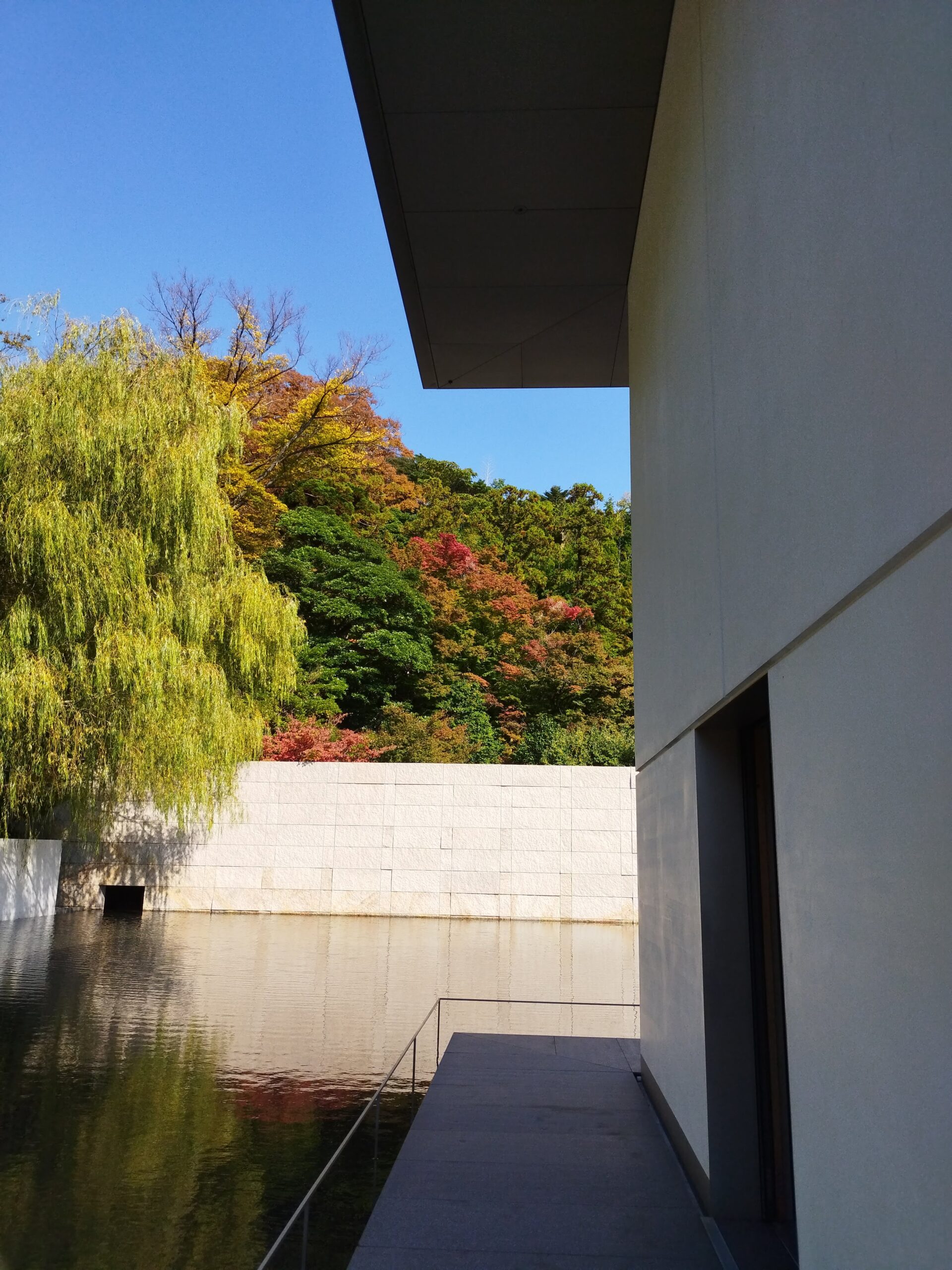本ブログは観光業、企業接待、留学生対応等で英語案内が必要ながら、多忙で準備に時間をかけられない方々の為にすぐに使える情報を分かりやすく解説しています。
👉タイトルの各語は「仏教哲学者」”Buddhist philosopher”、「禅思想」”Zen philosophy”.「瞑想」”contemplation”と言うことができます。
今回はビジネスで北陸金沢へ来日中の重要顧客を商談後、禅研究家として世界的に著名な鈴木大拙の業績と思想を展示する『鈴木大拙館』へ、急遽ご案内することになった際の英語表現をご紹介します。
👉本ブログでは、雑踏の中を一緒に歩きながら口頭で、よりネイティブに自然で分かり易い表現を目指しておりますので、詳細で高度な内容をご要望の方は公式HPや専門家サイトをご参照ください。
1. 基本情報
まずは、ご案内前の基本的なご説明例を段階的にご紹介します。いつも通り、日本語で説明できないことは英語でも説明できませんので、日本語→英語の順番で進めて参ります。
👉海外、特に欧米での鈴木大拙の知名度は高く、鈴木大拙館への訪問者はそれなりの知識を持っている方もおられますが、単に旅程に組まれているだけ、或いは名前だけは知っているので折角だからという方も多いので、本番のご案内をスムーズに進める為にも、何とかここは上手くお伝えしたいところです。
1.1:基本用語について
このブログでは本館案内の大前提である2名の偉大な哲学者と建築家で頻繁に使われる形容表現は、それを何度も読み聞きする負荷を下げる為、文中では単純に「名前」「彼」だけの表現に留めております。その辺りは基本用語として下記に纏めましたので、ご案内時に必要に合わせて適時挿入していただけれと思います。
1.1.A 鈴木大拙の主な形容表現:
- 高名な哲学者: a renowned philosopher
- 世界的な仏教哲学者:a world-renowned Buddhist philosopher
- 世界的に著名な禅学者:a world-renowned Zen scholar
- 鈴木大拙哲学:the philosophy of D.T. Suzuki
- 傑出した仏教学者: an eminent Buddhist scholar
- 国際的な仏教思想家: an international Buddhist thinker
- 禅の世界的権威: a world authority on Zen
- 日本の精神性を世界に紹介した人物: a figure who introduced Japanese spirituality to the world
- 東洋と西洋の懸け橋となった哲学者: a philosopher who bridged East and West
- 比較思想研究の先駆者: a pioneer in comparative thought studies
1.1.B 建築家(谷口 吉生(たにぐち よしお)の主な形容表現
- 著名な建築家:a renowned architect
- 世界的に著名な現代建築家:a world-renowned modern architect
- 国際的な建築家: an international architect
- 国際的な評価の高い建築家: an internationally acclaimed architect
- 建築界の重鎮: a leading figure in the architectural world
- モダニズム建築の巨匠: a master of modernist architecture
- 日本の美意識を体現する建築家: an architect embodying Japanese aesthetics
- 静謐な空間を創造する建築家: an architect who creates serene spaces
- ミニマリズムの追求者: a pursuer of minimalism
- 美術館建築の第一人者: a leading figure in museum architecture
1.2 入館時の心得
本館には鈴木大拙の精神性を来場者に考えていただきたいユニークなコンセプトがあり、単に見て楽しんでいただく展示館ではない点を入館時にご説明しておくことが望ましいので、その辺り纏めてみました。ここもお好みに合わせてお試しください。
- 当館は思索と学びの場です。展示はできる限り静かにご覧ください。
- 荷物の持ち込みは可能ですが、無料ロッカーもございますのでご利用ください。
- お手洗いは受付の外にあります。ご入館前にお済ませいただくことをお勧めします。
- 館内の一部エリアでの写真撮影はご遠慮ください。シャッター音が、思索にふける来館者の妨げになることがあります。
- そのため、ガイドによる説明も最小限にとどめ、大きな声での解説は行いませんのでご了承ください。
- 館内でのご飲食はご遠慮いただいております。
- 蓋つきのペットボトルであっても、館内での飲用はご遠慮ください。
- 携帯電話はマナーモードに設定し、通話はご遠慮ください。
- 当館での体験が、皆様の新たな発見や思索のきっかけとなることを願っています。
- 色々と制限がありお手数をおかけしますが、これも禅修行の一部としてご協力お願いいたします。
《英訳例》
- This museum is a place for contemplation and learning. Please view the exhibits as quietly as possible.
- You can bring your bags in, but we also have free lockers available for your convenience.
- The restrooms are located outside the reception area. We recommend using them before you enter the museum.
- Please refrain from taking photos in certain areas of the museum. The sound of the shutter can disturb visitors who are deep in thought.
- For this reason, explanations from guides will be quite limited in scope and will not be given in a loud voice. We appreciate your understanding.
- Eating and drinking are prohibited inside the museum.
- Even lidded plastic bottles are not allowed for drinking inside the museum.
- Please set your mobile phones to silent mode and refrain from making calls.
- We hope your experience at the museum provides new discoveries and sparks new thoughts.
- We understand there are various restrictions and apologize for any inconvenience. We kindly ask for your cooperation, viewing these guidelines as part of your Zen practice.
1.3 入館時の要約説明
予備知識のないインバウンドに対し入館時に使えそうな要約説明例を3段階の視点でいくつか置いてみましたので、お相手に合わせて使えそうなフレーズがあればお試しください。
a)かいつまんで言うなら(標準的インバウンド向け4例)
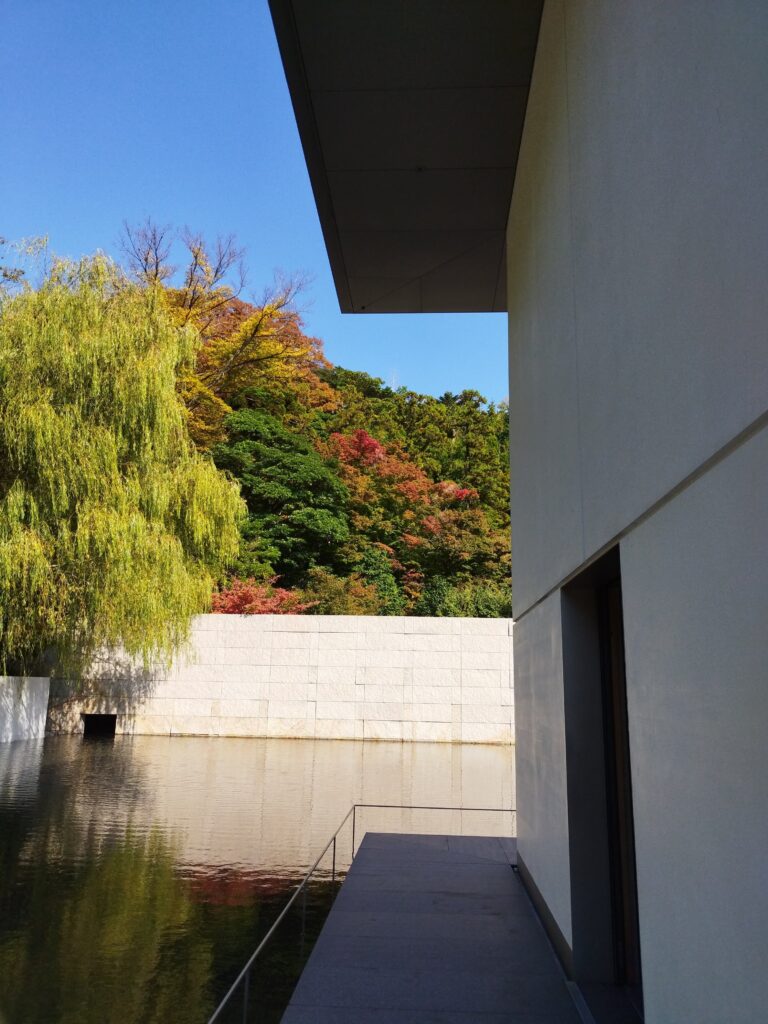
- 当館は、最小限の展示を通して、鈴木大拙の禅哲学を最大限に伝えようと努めています。
- 建物は、彼の生誕地からインスピレーションを得て、この偉大な禅思想家を育んだ静かで瞑想的な環境を表現し、哲学的な雰囲気を見事に作り出しています。
- 約10年前に建てられたこの美術館は、世界的に著名な建築家と禅思想家が、共にシンプルさとミニマリズムへの深い共感を共有していたことから生まれた、歴史的に重要な融合を体現しています。
- このユニークな美術館は、鈴木大拙が禅において目指した無の境地をまさに体現するかのように、彼の**とらえどころのない「無」**という概念を具体的な建築で表現しています。
《英訳例》
- The museum endeavors to convey his Zen philosophy as fully as possible through a minimalist approach to exhibits.
- The building successfully creates a philosophical atmosphere, drawing inspiration from his birthplace and the quiet, contemplative environment that nurtured this great Zen philosopher.
- This museum, created about ten years ago, represents a historically significant fusion by a globally renowned architect for this Zen philosopher, both of whom shared a profound appreciation for simplicity and minimalism.
- This unique museum embodies his intangible concept of ‘nothingness’ through tangible architecture, perfectly reflecting his Zen pursuit of that very state.
b) もっと簡略化するなら(英語が第二言語の方向け3例)
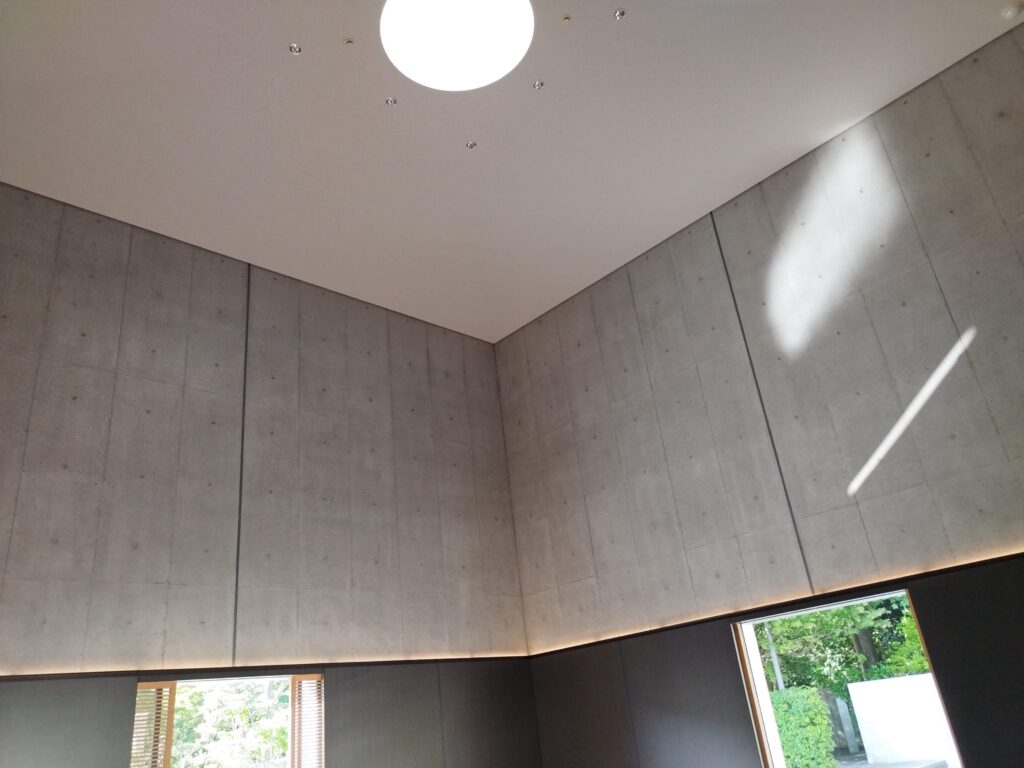
👉英語が母国語でないゲスト向けに若干簡単な表現に置き換えてみました。また鈴木大拙の名前以外、殆ど知識のないお相手にどうでしょうか。
- この美術館は、多くの物を展示するのではなく、むしろ禅寺のように、来館者が瞑想するための空間を提供しています。
- 鈴木大拙について多くの事実を知りたいと思っている方は、もしかしたら物足りなさを感じるかもしれません。しかし、彼の核となる「無」の思想を、最小限の展示を通して直接体験できるでしょう。
- この美術館は、あなた自身の内なる価値を考察する機会を与えてくれます。深く意義深いと感じるかもしれませんし、そうでないと感じるかもしれませんが、それは個人的な発見となります。
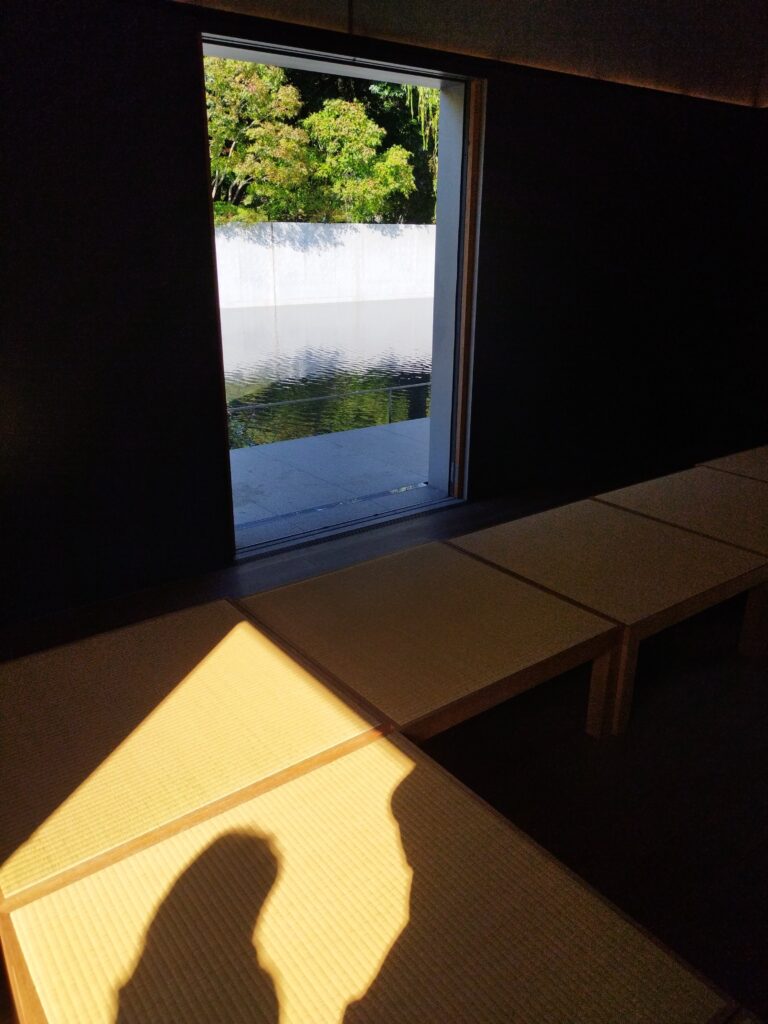
《英訳例》
- This museum doesn’t display many objects. Instead, it offers a space for visitors to meditate, much like a Zen temple.
- Visitors hoping to learn many facts about him might be disappointed. However, they may experience his core idea of ‘nothingness’ directly through the minimal displays.
- This museum invites you to reflect on its value. You might find the experience deeply meaningful, or perhaps less so, which can be a personal discovery.
c) 一言で済ませるなら(米国人向け2例)

👉もし一言で済ますとしたらこんな感じでしょうか。特にアメリカ人は同じ意味の単語でも短い方を好んで使うので米国人向き?よりしっくりくる方をお試しください。
- この補強されたコンクリートの建物は、通常の美術館というよりも一種の禅寺のようなもので、禅に関心のある方には必見です。
- 一見するとシンプルなこの美術館は、彼の禅における理想である「無」を見事に表現しています。
《英訳例》
- More like a Zen temple than a typical museum, this reinforced concrete building is a must-visit for Zen enthusiasts.
- This simple-looking museum beautifully expresses his Zen ideal of ‘nothingness’.
2.インバウンドの視点!笑いが取れるかも?
ここからは、事前説明でなく、実際に鈴木大拙館の中を見ながら、各所を眼の前にして自然に湧き上がるインバウンドの疑問や好奇心を想定した説明例です。👉実際に使えるかどうかは相手次第ですが、基本的に全て、前半部は説明に使える真面目パート、後半部は雑談力upを意図したおふざけパートの2構成になっています。
Q1 名前 のD.T. Suzukiはどういう意味ですか?
”What does the name D.T. Suzuki mean?”
入館時に限りませんが、案内中にD.T. Suzukiの名前の意味を聞かれることがありますので、それを想定したネタです。いつも通り、順序は日本語>英語で、英語音声は前半の真面目パート(1-5)とおふざけパート(6-10)の2ファイルに分かれています。👄本パートの英語表現習得用音声ツールはこちらへ!
- 彼の本名はファミリーネームが「鈴木」、ファーストネームが「貞太郎」と言います。
- 彼には「大拙」という、トップクラスの仏教信徒に付けられる法名が加わっていて、彼の仏教の師匠が名付けたと言われています。
- 「大拙」の文字通りの意味は「とても拙い」(very unskilled)ですが、彼の師匠の意図は「繕わない」(No mending, just being).
- つまり「とても巧い」(very skillful)の意味を込めたそうです。
- なので、英語では〈Daisetz Teitaro Suzuki〉、略してD.T. Suzuki と呼ばれています。
- でも、発音が良くないと、Diety Suzuki (神様!鈴木)に聞こえてしまうことがあります。
- 彼の禅を世界に啓蒙した精神性の高さから、Diety Suzuki が正しい名前と勘違いしている人もいるかもしれません。
- そういえば、たまにお辞儀をして本館に入る人も見たりしますので、その人にとって、この鈴木大拙館は、彼を祭る神社のようなものかもしれません。
- でも、仏教哲学者の彼にしてみれば、神社扱いされて, 来場者が頭を下げて彼の美術館に中に入るのを見てあの世で怒っているかも。
- 生前、全ては「あるがまま、ただ在るだけ」(No mending, just being)とよく言ってたので、もしかしたら「曲げない、見るだけにしろ」(No bending, just seeing)って怒りですかネ?
《英訳例》
- His real name is “Suzuki” as a family name and his first name is “Teitaro”.
- He has the added Dharma name “Dai-setz,” which is given to a top-class Buddhist layman, and is said to have been named by his Buddhist mentor.
- The literal meaning of “Dai-setz” is “very unskilled,” but his mentor’s intention was “No mending, just being”.
- In other words, he was said to mean “very skillful” (very skillful) with this Dharma name.
- Therefore, in English, it is called “Daisetz Teitaro Suzuki,” or “D.T. Suzuki” for short.
- But if you don’t pronounce it well, it can sound like Diety Suzuki (God! Suzuki).
- Because of the spiritual significance with which he enlightened the world about Zen, some may mistakenly assume ‘Deity Suzuki’ as his correct name.
- Come to think of it, sometimes we see people bowing as they enter the D.T. Suzuki Museum, so for them, this building may be akin to a shrine dedicated to him.
- However, as a Buddhist philosopher, he might be displeased in the afterlife at being treated as a shrine and seeing visitors bending their heads when entering his museum.
- Before his death, he often used to say that “No mending, just being”, so perhaps he would be displeased, saying, ‘No bending, just seeing’?
Q2 この三角のくぼみは何のためにあるのですか?
What are this triangular alcove for?/What is the purpose of this triangular alcove?
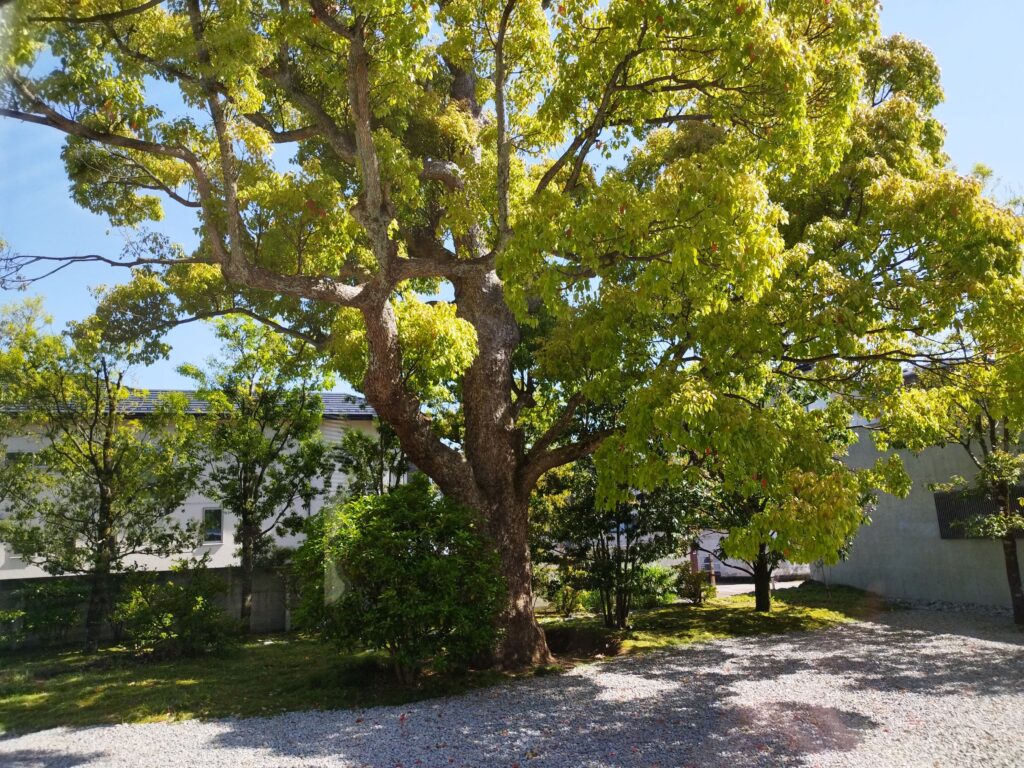
入場すると、真っ直ぐの通路の半ばに意図的に作られた三角の出っ張り箇所がありますので、それをネタに、楠や他の木に係る英語表現を織り込んでみました。このQ2では各文毎に日英で区切りました。このパートも前半の真面目パート(1-7)と後半のおふざけパート(8-13)は話者とトーンが変わります。
- このくぼみは、眼の前の庭と、そして特にあのくすのきを鑑賞するために作られました。
- This alcove was made to appreciate the garden in front of you and especially that camphor tree.
- 驚いたことにあの楠の木は鈴木大拙が子供の頃から既にあったもので、彼はこの木を見ながら育ったそうです。
- Surprisingly, that camphor tree was already there when D.T. Suzuki was a child, and it is said that he grew up looking at it.
- 楠の木は防虫剤や薬として使われるショウノウが抽出できる為、古来より人工的にも植えられて大切にされました。
- Camphor trees were also planted artificially and cherished since ancient times because people can extract camphor, which is used as medicine.
- 薬のカンフル剤として、心臓を刺激して血圧を上げるために注射されました。
- Camphor, used as a drug, was specifically injected to stimulate the heart and increase blood pressure.
- もしかして鈴木少年がこの木に刺激を受けて、疲れた現代人に禅で心のカンフル剤を打ったのではと想像すると面白いですね。
- It’s intriguing to imagine that the young Suzuki may have drawn inspiration from this tree, using Zen as a mental camphor for weary modern individuals.
- 何より楠木からカンフル剤を抽出するには蒸留工程も必要で大変な手間と忍耐が必要です。
- Above all, extracting camphor medicine from camphor wood include a distillation process, which requires a great deal of time and patience.
- 彼が禅を世界に広めた忍耐力もその楠木から自然と身についたのかもしれませんね。
- Maybe the patience with which he spread Zen worldwide was also influenced by that camphor tree.
- 考えてみると、鈴木大拙だけでなく、人の性格は幼少期にどんな木を見て育ったかによって、ある程度影響を受けると言えるかもしれません。
- Come to think of it, not only D.T. Suzuki but every person’s personality is, to some extent, influenced by the trees they grew up looking at in childhood.
- 例えば、私の親しい友人の庭には、子供の頃に柿の木とイチジクの木がありました。彼はいつも簡単にすぐに美味しい結果を得ようとする傾向がありました。
- For example, a close friend of mine had a persimmon tree and a fig tree in his garden when he was young. He always had a tendency to seek immediate and effortless rewards.
- もしかすると、それは食べたいと思った時に、何の手間もかけずにすぐに果実をもぎ取って味わうことができたからなのかもしれません。
- Perhaps because he could simply pluck the fruit whenever he wanted, enjoying its delicious taste with no effort or patience?
- 幼少期の木々が人に影響を与えるのだとしたら、彼の柿とイチジクの木の経験が「人生の報酬も楽に手に入るものだ」と思わせた可能性もあるかもしれませんね。
- If trees do shape our early tendencies, maybe his easy access to persimmons and figs set him up to expect life’s rewards to be equally effortless!
- また、「森林浴」が示すように、木々は子供の成長だけでなく、それを眺める人々にも影響を与えるものです。
- As the concept of forest bathing suggests, trees don’t just affect childhood development—they also influence the people who view them.
- だからこそ、私はガイドをする際に、この楠について必ず説明するようにしています。そうすれば、ゲストの皆さんも、私の素晴らしくも驚くほど長いツアーに少し忍耐力を養えるかもしれませんので。
- That’s why, when I guide guests, I always make sure to explain this camphor tree—so they can cultivate a little more patience during my ‘incredibly fascinating yet surprisingly long’ tour!
Q3 この掛け軸に描いてある○△□はどんな意味ですか?
”What do the ○△□ on this hanging scroll mean?”
展示コーナーの掛け軸を一緒に観ながら、よく聞かれる質問をベースに、日本の伝統フードに関する英語表現を盛り込んで纏めてみました。いつも通り、英語音声は前半真面目パート(1-7)と後半おふざけパート(8-15)の2ファイルで話者とトーンが変わります。

- この掛け軸は大拙の直筆ですが、○△□自体は彼のオリジナルではありません。
- This drawing on the hanging scroll is by D.T.’s hand, but the figures—a circle (○), a triangle (△), and a square (□)—are not his original creation.
- 元々これはサムライ時代の画家でもあった禅僧が描いたもので、真意不明で色々な意味で解釈されています。
- Originally, this was painted during the samurai era by a Zen monk who was also a painter, and it has been interpreted in many ways, with its true meaning remaining unresolved.
- 禅には言葉で教えるのでなく自ら悟らせるという基本思想とその為の禅問答という伝統的手法があります。
- Zen teaches the principle of not using words to instruct, but instead letting people realize truths by themselves, often using the traditional method of Zen questions and answers.
- 答えがない色々な謎掛けをして自ら考えさせて何らかの真理を悟られせようとする狙いがあり、この絵も禅問答と考えられています。
- The aim is to encourage people to think independently and discover some form of truth by presenting them with various riddles that have no clear answers, and this painting is considered an example of a Zen question and answer.
- 大拙はこれを宇宙を表現していると解釈し、掛け軸以外でも色々な場所で言及しています。
- Daisetz interpreted this as a representation of the universe and referenced it in various places beyond just hanging scrolls.
- 彼によると「○」は無限、「△」は「形の元」、「□」は△を2つ重ねたものだそうです。
- According to him, the circle (○) represents infinity, the triangle (△) is the source of everything, and the square (□) is formed by two triangles (△) stacked together.
- この二重過程が無限に続き、無数の事象が生じるものが宇宙であるというのが彼の解釈です。
- His interpretation is that the universe is an endless series of these stacking processes with triangles, leading to an infinite array of events.
- でも私達の様な俗人には、このような、難解な禅問答には遠く理解が及びません。
- But for laymen like us, such esoteric Zen questions and answers are far beyond our comprehension.
- もしかして、多くの人は特にお腹が空いている時は「○△□」を串に刺したおでんを連想するかもしれません。
- Perhaps many people, especially when they are hungry, might associate oden, traditional Japanese simmered vegetables, with this figure—○△□—on a skewer.
- 日本の有名なアニメにはこの串刺しおでんをいつも持って歩くキャラクターがいます。
- A famous Japanese anime features a character who always walks around with this skewered oden.
- ○は輪切りの大根か、茹で卵、△はこんにゃく、□はかまぼこに見えます。
- The circle (○) looks like a sliced radish or boiled egg, the triangle (△) looks like konjac (Devil’s Tongue), and the square (□) looks like kamaboko, a fish cake.
- ○は無限に終わらない食欲を表し、△は食の基本、試食を構成するのですかね?
- Can we assume that the circle (○) represents the never-ending appetite, and the triangle (△) constitutes the basis of food, like trial tasting in daily life?
- □は試食を重ねたてできる文字通りまともな食事(square meal)の意味のように見えます。
- The square (□) literally seems to mean ‘square meals,’ decent meals that can be completed with repeated, everlasting trial tastings.
- その図形から宇宙を連想するその無欲の禅僧と食欲を連想する我々凡人はあまりに対照的ですね。
- The ascetic Zen monk who associates the figure with the universe is in stark contrast to us mere mortals who associate it with our appetites.
- でも美味しく食べた後は、後には何も残らないので、禅の理想の「無」の世界を実現しているかも!
- But after eating delicious meals, of course, there is nothing left afterward, so we may be able to achieve the Zen ideal of ‘nothingness’!

Q4 この水は何を意味しているのですか?
”What Does This Water Mean?”
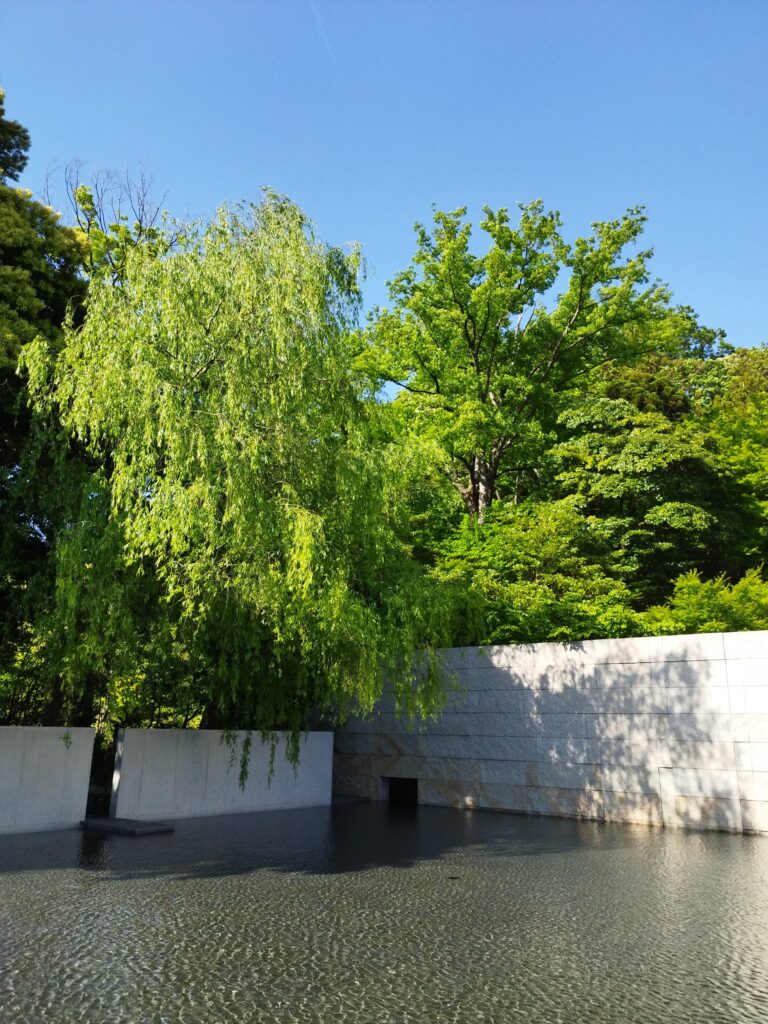
鈴木大拙館の目玉である水鏡ネタです。ここでも重要モチーフの「○△□」ネタに慣れる意図でそれに絡めてまとめてみました。いつも通り前半は説明にも使える真面目パート(1-5)と後半は雑談力UPの為のおふざけパート(6-10)の2構成で話者が変わります。
- これは「水鏡の庭」と呼ばれ、関係者によると、鈴木大拙の宇宙観「○△□」を表現しているそうです。
- This is called the Water Mirror Garden, and according to those involved, it reflects D.T. Suzuki’s view of the universe: ○△□.
- 水面の波紋は○(円)を示し、簡素化された軒や床の角は△(三角形)を、庭の輪郭と敷石は□(四角形)を象徴しています。
- The ripples on the water surface signify ○ (circles), the simplified eaves and floor corners represent △ (triangles), and the garden’s outline and paving stones embody □ (squares).
- この建物を設計した世界的な建築家は、東京にも有名な美術館を手がけており、そこにも同様の水鏡が使われています。彼の代表的なモチーフといえるでしょう。
- The renowned architect who designed this building also has a famous museum in Tokyo that features a similar water mirror—widely considered his signature motif.
- 極限まで削ぎ落とされたミニマルなデザインこそが、まるで水鏡のように彼の本質を映し出しているのです。
- His philosophy shines through in this minimalist design, stripped down to its purest form, much like a water mirror itself.
- この建物は、余計な装飾を排し、線と面によるシンプルな構成によって存在感を際立たせています。
- The building’s presence is emphasized by a simple interplay of lines and surfaces, free from unnecessary ornamentation.
- しかし、私はこうした専門家の解説にはあまり深入りしないことにしています。
- But I always make a point not to dwell too much on expert interpretations.
- というのも、水鏡をありのまま楽しんでいたお客様の中には、こうした説明を聞いて逆に戸惑う方もいらっしゃるからです。
- Some guests who initially enjoyed the water mirror simply as it was later found themselves uneasy with such analyses.
- また、鈴木大拙館は瞑想と学びの場であるため、通常のガイドによる説明は許可されていません。
- Additionally, as the D.T. Suzuki Museum is a place for meditation and learning, normal guided explanations are not allowed.
- そしてもう一つ、積極的に説明しないことには別の理由があります。
- And beyond that, there’s another reason I don’t explain much:
- この偉大な思想家と建築家が掲げたミニマリズムの精神に倣い、私の説明もまた——限界までミニマルなのです!
- In keeping with the spirit of this great thinker and architect, my explanations as a guide follow the same philosophy—pared down to the bare minimum!
御礼🔶後書き
🔶今回も最後まで読んで頂き大変ありがとうございます。もし何かご意見やリクエストございましたらお気軽に『Help Desk』にてお声がけくださいませ。Gold🔶R60509.v.4a.4a.1a
